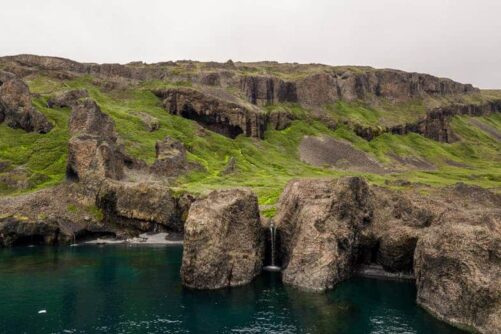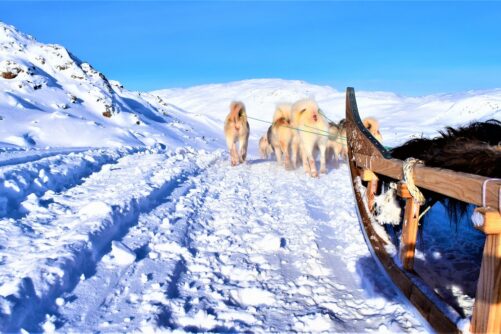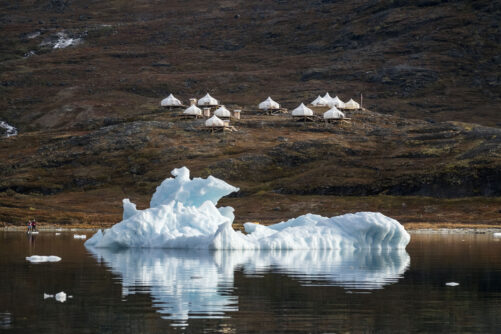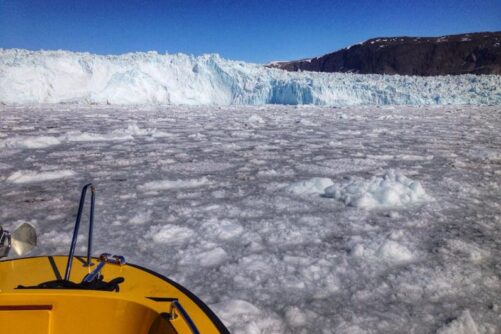
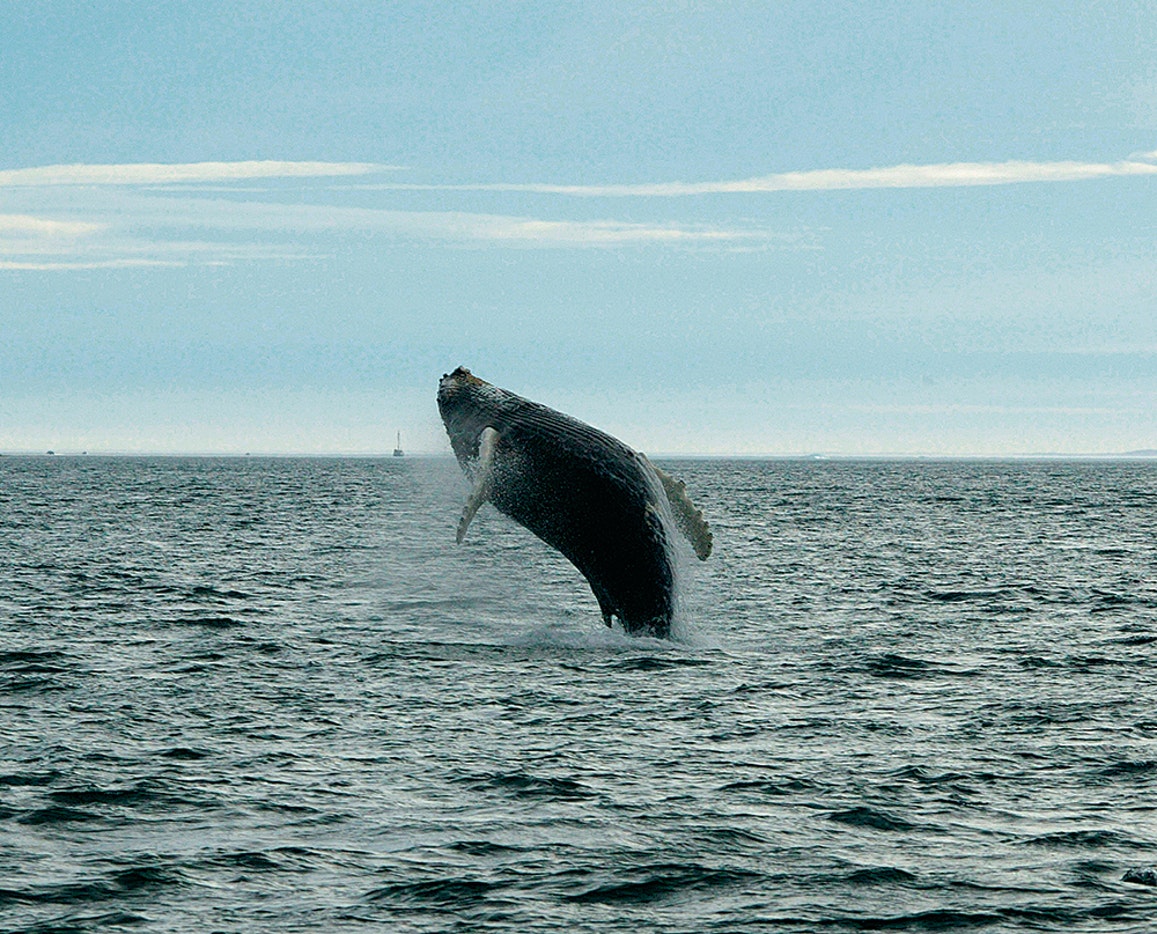
Humpback whales in Greenland
Jump to chapter
Published: 05/06/2020
Reading time: 4 minutes
One of Greenland’s biggest summer guests is the humpback whale
It comes like a migratory bird in the month of May and swims in the larger fjords along the coast until October when it swims back to more southern climes.

Huge marine mammal of Greenland
This huge marine mammal is totally protected in the whole of Greenland. Over recent decades, the number of humpback whales has steadily increased. Today there is a viable population of about 3,000 individuals in Greenland.
There is a small increase of a maximum of 30 individuals each year within this population because a female typically gives birth to a calf every one to three years. Gestation takes between 11 and 12 months and the calf stays with its mother for up to a year, drinking 50 liters of its mother’s milk every day.

A sociable swimmer
People who travel by water, therefore, have a good chance of meeting a humpback whale. In addition, the humpback whale, compared to most other whales, is a really good »tourist whale«. It is relatively trusting and does not scare easily if a boat approaches at a moderate speed.
The humpback whale also has a habit of lifting its tail vertically out of the water before taking a deep dive. This is usually accompanied by sighs of satisfaction from tourists and the click of cameras if there is a boat nearby.

Humpback whales fish together
Another behavior trait that makes the humpback whale so popular is that it often spends long periods at the surface, where it can lift its gigantic flippers and create enormous splashes. On rare occasions, a humpback whale may even jump right out of the water, but you have to be lucky to experience this. It happens when several whales join up to fish together.
They built a net by blowing a ring of bubbles at the bottom. The fish don’t swim through the bubbles so they are caught in the confines of the cylinder formed by the bubbles. The whales then take turns swimming up through the bubble tunnel and feed on the captured shoals of fish. They can travel up through the water so fast that they almost fly up out of the water.

A special kind
Humpback whales belong to the family of baleen whales, i.e. whales that feed using the ingenious baleen – a comb-like structure that filters tiny organisms from the seawater which is gulped into the mouth in huge quantities. Traditionally, krill counts as the most important food. But at certain times, shoals of fish are very important for humpback whales in Greenland.
This is true in June in particular, when the small fish of the salmon family, the capelin, come close to the coast to spawn. The humpback whales can chase the capelin into the shallow water, sucking the fish into their enormous mouths. Where other types of whales are known for beaching themselves in shallow waters, the humpback whale has a distinct ability to avoid beaching.
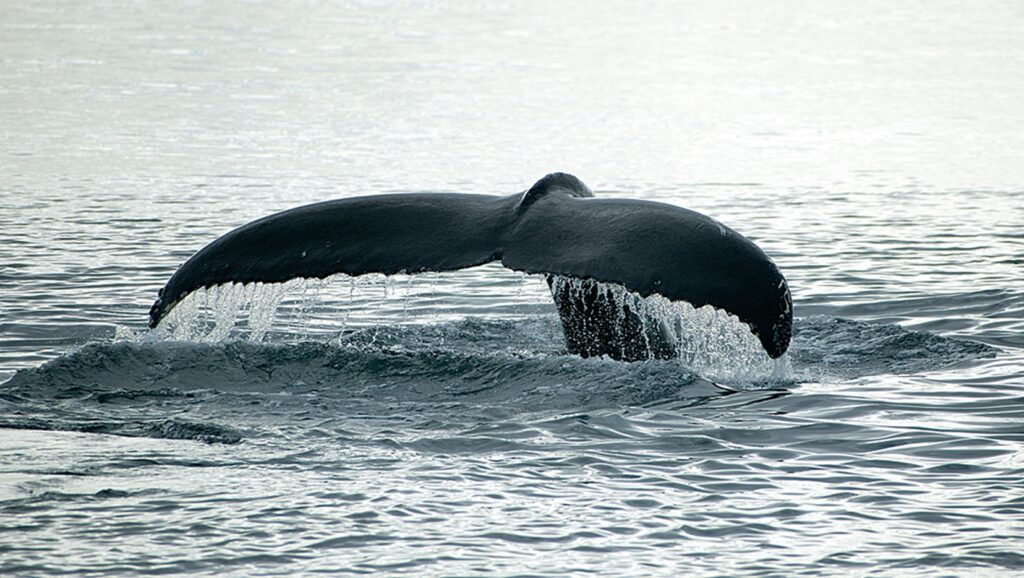
Characteristics of the humpback whales
One characteristic of the humpback whale is the unique black and white pattern that is found on its fluke. The patterns are used by researchers to identify individuals. This makes it possible to collect information about the migration of humpback whales and their preferences for certain areas.
In later years, Greenland Nature Institute has collected digital photos of whale flukes from, e.g. visiting tourists to supplement information about humpback whales in Greenland. Another characteristic is the enormous sound register of the humpback whale and its whale song is, therefore, world-famous.
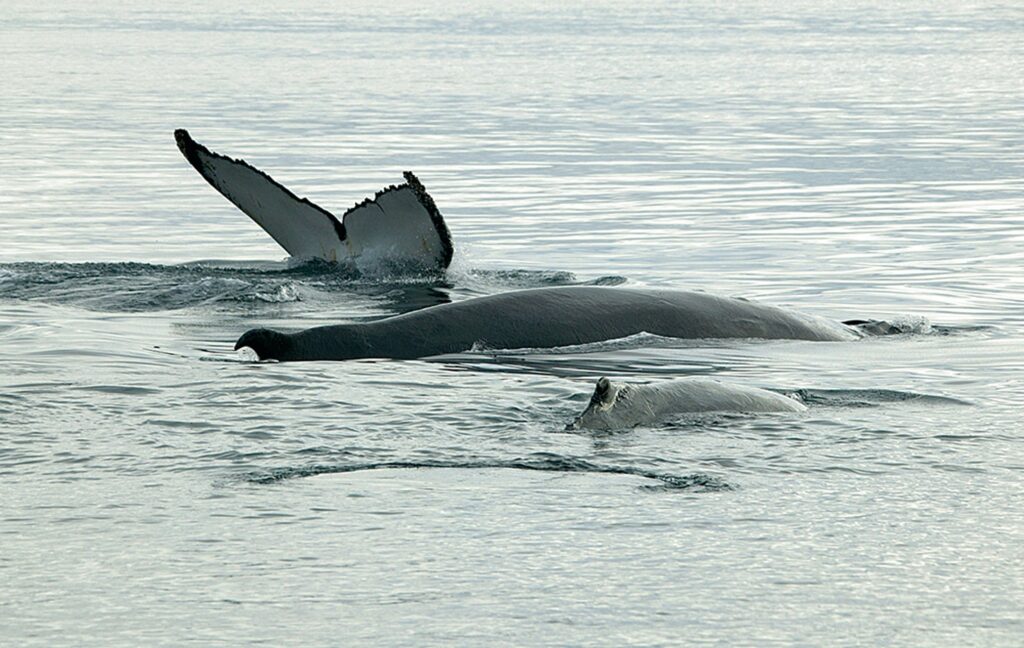
Facts about the humpback whales
- Latin name: Megaptera novaeangliae
- Size: males 11-17.5 metres; females 11-19 metres; newborns, average about 4.3 metres
- Weight: Adults up to 35 tons. A newborn humpback whale calf weights up to 2.5 tons
- Length of flippers: 5 metres (largest flippers in the animal world.)
- Food: Small shoal fish, krill and plankton.
- Distribution: In winter in tropical waters and in the summer in the polar regions.
- Status: Endangered; has previously suffered intensive hunting
- Source: www.wikipedia.org and Greenland Nature Institute
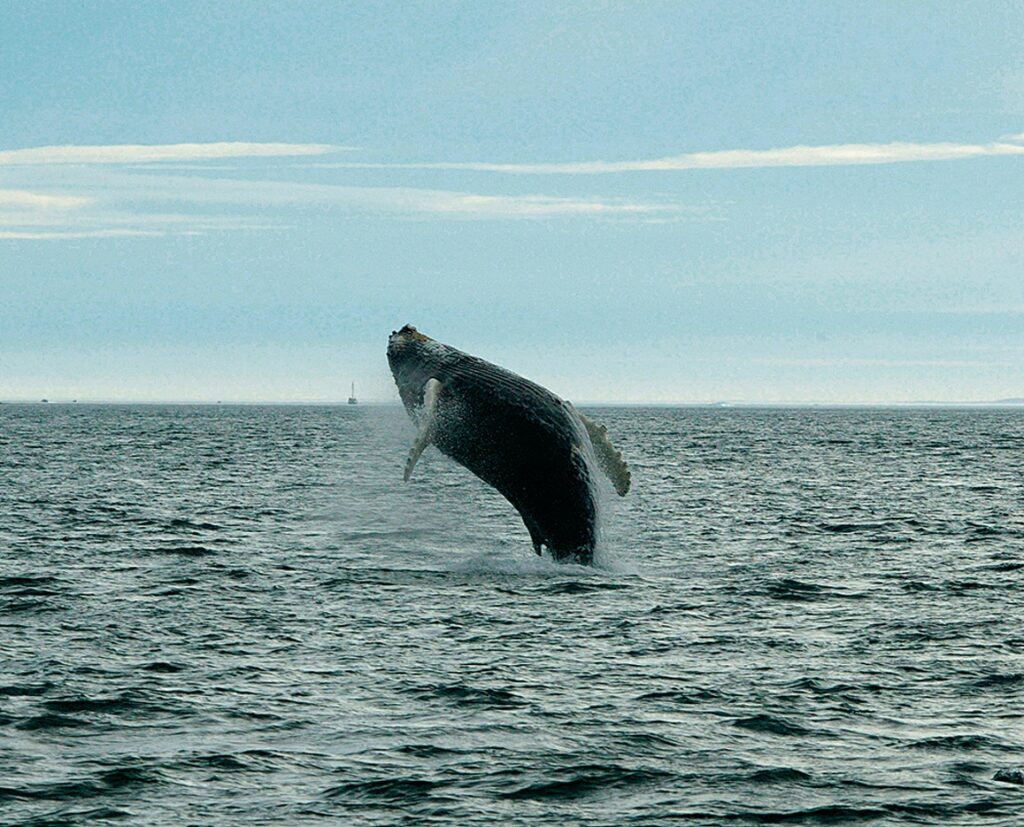
Click here if you like to go on one of our whale watching tours to see the majestic marine mammal!
Read more articles from Guide to Greenland
-
4.50(2)

Snowshoe hike and restaurant H8 | Oqaatsut | Disko Bay
Tour startsIlulissatDuration6 hoursFrom 1895 DKKSee more -

Kuannit Hike | Qeqertarsuaq | Disko Bay
Tour startsQeqertarsuaqDuration4 hoursFrom 595 DKKSee more -

Whale Safari | Uummannaq | North Greenland
Tour startsUummannaqDuration4 hoursFrom 2900 DKKSee more -
Including flights from Iceland

Tasiilaq Winter World | 8 Days | East Greenland
Tour startsTasiilaqDuration8 daysFrom 29650 DKKSee more -
Price for 4 people!

Glacier Landing by Helicopter | Qaqortoq | South Greenland
Tour startsQaqortoqDuration1.5 hoursFrom 17200 DKKSee more -

Dog Sled Expedition | Tasiilaq | East Greenland
Tour startsTasiilaqDuration5 hoursFrom 1700 DKKSee more -
5.00(2)

Oqaatsut Kayaking Day | Ilulissat | Disko Bay
Tour startsIlulissatDuration7 hoursFrom 2195 DKKSee more -

Scenic Flight | Nuuk
Tour startsNuukDuration30 minFrom 6380 DKKSee more -
5.00(1)1 To 6 Passengers Included

Private Catch’n’Eat | Qooqqut Nuan | Nuuk
Tour startsNuukDuration6 hoursFrom 14500 DKKSee more -
5.00(2)All inclusive! Group pricing!

Spend a night in a real Igloo | Ilulissat
Tour startsIlulissatDuration2 daysFrom 4300 DKKSee more -
4.80(5)

Russell Glacier | Kangerlussuaq | West Greenland
Tour startsKangerlussuaqDuration4 hoursFrom 750 DKKSee more -

Assaqutaq Trail Transfer | Sisimiut
Tour startsSisimiutDuration5.5 hoursFrom 700 DKKSee more -
4.50(4)

Whale Safari | Ilulissat | Disko Bay
Tour startsIlulissatDuration3 hoursFrom 1195 DKKSee more -
1 TO 6 PASSENGERS INCLUDED

Northern Lights Private Boat Tour | Nuuk
Tour startsNuukDuration3 hoursFrom 8500 DKKSee more -
5.00(2)

Snowshoe Hiking & Sauna experience | Ilulissat | Disko Bay
Tour startsIlulissatDuration4.5 hoursFrom 675 DKKSee more -
Accommodation and tours included!

Arctic Capital to Wilderness Escape | 4 Days in Nuuk & 2 Nights at Camp Kangiusaq
Tour startsNuukDuration6 daysFrom 11995 DKKSee more -
5.00(1)Flightseeing with landing!

ISUA Glacier Adventure By Helicopter | Ilulissat | Disko Bay
Tour startsIlulissatDuration1.5 hoursFrom 4695 DKKSee more -
5.00(1)1 To 6 Passengers Included

The Calving Glacier Eqi | Private tour | Ilulissat | Disko Bay
Tour startsIlulissatDuration6 hoursFrom 11300 DKKSee more -

Explore the Cultural site of Qilakitsoq | Boat tour | Uummannaq | North Greenland
Tour startsUummannaqDuration3 hoursFrom 1500 DKKSee more -

Boat tour to Saattut Settlement | Uummannaq | North Greenland
Tour startsUummannaqDuration2 hoursFrom 1300 DKKSee more


